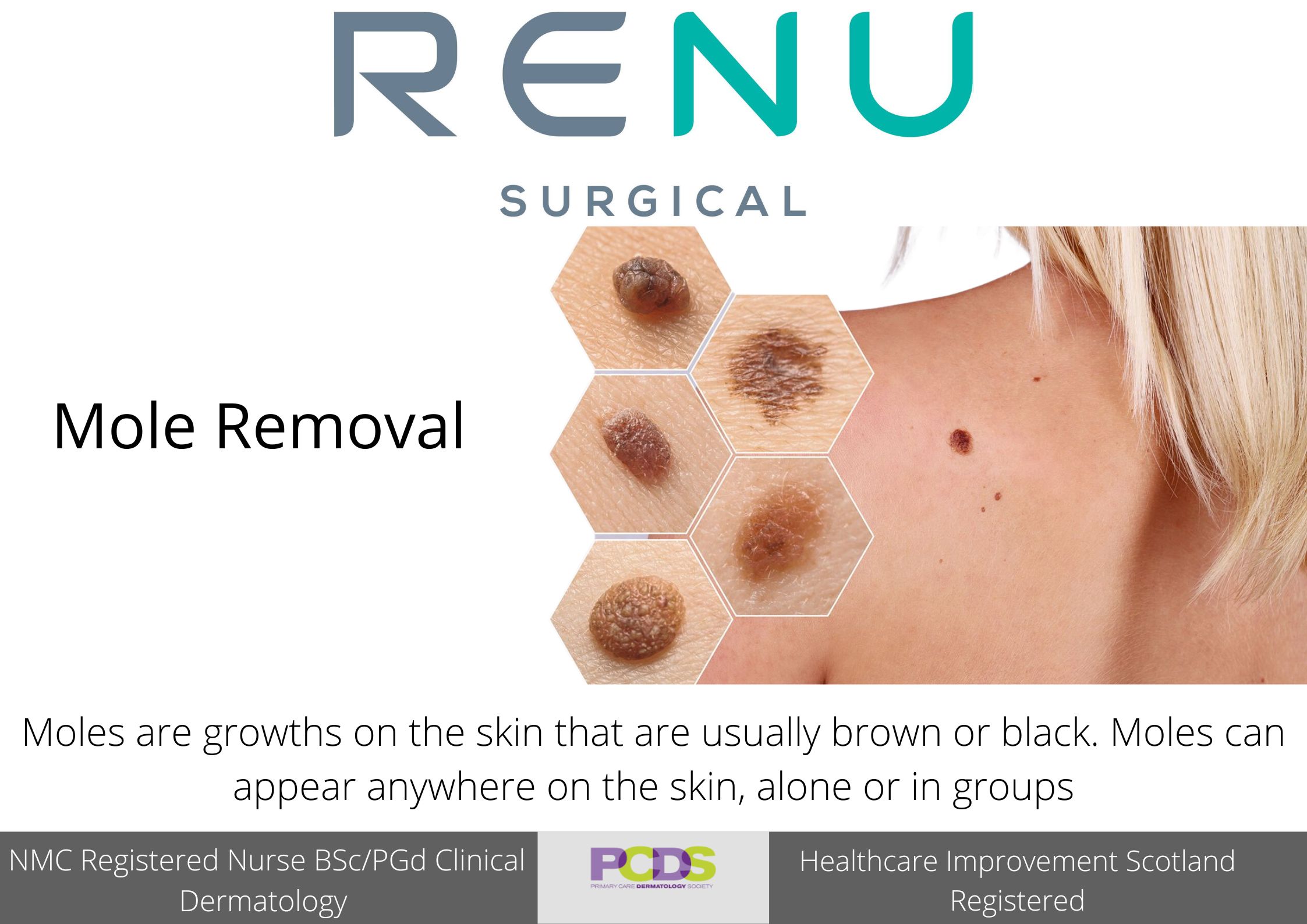Moles are small, coloured spots on the skin. Most people have them and they’re usually nothing to worry about unless they change size, shape or colour.
Renu Skin Clinic are proud to be the only clinic in Tayside to use this method of mole removal without the need of any stitches leaving a scar. At Renu we are always at the forefront of technology and invest heavily to make sure our patients get the best results with the best outcome and less side effects.
Mole removal using electrosurgery generally occupies a place on the electromagnetic spectrum from 350 Khz to 1.7 Mhz. The lower the Mhz, the more lateral tissue damage produced with tissue incision. In electro surgery, the electrode tip provides the resistance during ablation. The tip heats up and significant heat is tranferred to the target tissue. This heat also affects the surrounding normal tissues, resulting in lateral tissue damage that can produce scarring.
Radiowave surgery operates at a frequency of 4.0 Mhz, which is about 4 million cycles per second.This is the optimum wavelength for precise incision with minimal lateral tissue damage. The reason that radiowave surgery is much more tissue friendly than electrosurgery has to do not only with the 4.0 Mhz wavelength but the fact that the electrode tip does not provide the resistance and hence does not get hot. It is the tissue that provides the resistance. Radiowaves are transferred to tissue through an electrode.
Radiowaves cause a pro cess known as intracellular volatiliztion whereby steam is produced in the cells, causing them to rupture. An- other difference between radiowave surgery and electrosurgery is the ground plate. With electrosurgery, it is possible to shock or burn the patient. Radiowave surgery does not employ a ground plate but rather an antenna that gathers the radiowaves and channels them back to the machine. The antenna, which does not need to be in direct contact with the patient, is Teflon coated so it cannot shock or burn the patient.
Reference. Dr. Niamtu (2007). Aesthetic Dermatology News.


